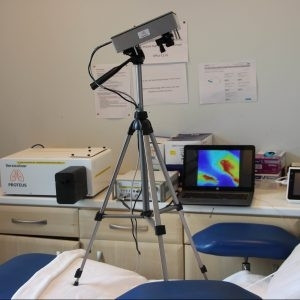Scientists develop surgical camera that can look through human body
The device is designed to help doctors track medical tools known as endoscopes.

A team Scottish scientists have developed a camera that can see through people's bodies. Researchers say the device will help them track surgical tools, namely endoscopes.
Endoscopic surgery also called minimally invasive surgery involves using multiple scopes inserted into the body to diagnose or treat ailments through small incisions made by surgeons.
While the scopes themselves normally have their own camera and light source, tracking them from outside the patient's body involves the use of x-rays and like instruments that are expensive. The camera that the team from the University of Edinburgh have developed searches for light sources from inside the body like the tip of an endoscope that provides light for the scope.
Researchers say their camera is intended to be used at the patient's bedside.

According to a report by the University, the team was able to track a point of light from within 20 cm of flesh and blood inside the body under "normal conditions". The report mentions that light beams from the endoscope are strong enough to pass through the body, but it gets scattered by organs and other tissues, making it difficult for surgeons to identify the exact location of the scopes at a glance.
The camera developed by the team is reportedly capable of identifying minuscule particles of light, called photons as it passes through the body, even if they are faint.
Apart from being able to capture the light passing through organs, the camera can also reportedly measure the time taken for light to reach it from its source, making it possible for this instrument to calculate exactly where in the body the scopes are in real time.
Prof Kev Dhaliwal, of the University of Edinburgh, said: "It has immense potential for diverse applications, such as the one described in this work." "The ability to see a device's location is crucial for many applications in healthcare, as we move forwards with minimally invasive approaches to treating disease," he added.
While the technology has been developed under laboratory conditions, it is not yet clear as to when it will be made commercially available for surgeons.
© Copyright IBTimes 2025. All rights reserved.





















